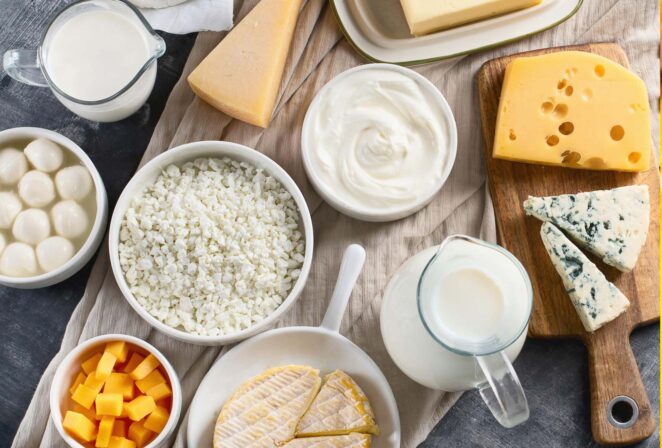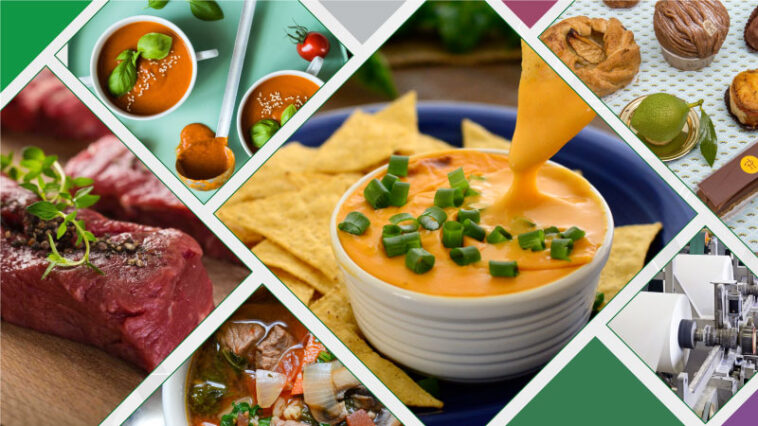Food hydrocolloids are fascinating substances that play a pivotal role in the food industry. At their core, hydrocolloids are large molecules that can form gels when dispersed in water. Their unique ability to modify the texture and consistency of food products makes them indispensable in various culinary applications. From thickening sauces to stabilizing emulsions and enhancing the mouthfeel of beverages, hydrocolloids are the unsung heroes behind many of our favorite foods. Their significance extends beyond just texture modification; they also play a crucial role in ensuring the stability, viscosity, and overall quality of food products.
Understanding Hydrocolloid Chemistry

Diving deeper into the world of hydrocolloids, one quickly realizes that their magic lies in their intricate chemical structures. These structures can be derived from a variety of sources, including plants (like guar gum from guar beans), animals (like gelatin from animal collagen), and even microbes (like xanthan gum produced by bacteria). The diverse origins of hydrocolloids mean that they come with a wide range of functionalities. For instance, the helical structure of some hydrocolloids allows them to trap water molecules, leading to thickening, while others form intricate networks that result in gelation.
Types of Food Hydrocolloids
Hydrocolloids can be categorized based on their origin, molecular structure, and functional properties. Some of the most common hydrocolloids include:
Starch: Derived from plants and used as a thickener in sauces and gravies.
Gums: Extracted from plants and used in ice creams to prevent ice crystal formation.
Pectin: Found in fruits and used to set jams and jellies.
Agar and Carrageenan: Extracted from seaweed and used as gelling agents in desserts and dairy products.
Food hydrocolloids have their unique set of properties and applications, making them versatile tools in the hands of food scientists and chefs.
Functionality in Food Systems

Hydrocolloids wear many hats in the food world. They can act as thickeners, turning watery liquids into luscious sauces. They can also form gels, creating everything from soft, wobbly jellies to firm, sliceable desserts. Additionally, hydrocolloids can prevent unwanted phenomena like phase separation (where components of a mixture separate) and syneresis (where a gel releases liquid). Their multifunctionality is a testament to their importance in food systems.
Applications in Culinary Creations
The culinary world, always in search of innovative techniques, has wholeheartedly embraced hydrocolloids. Renowned chefs and food scientists alike utilize them to craft dishes that tantalize the senses with unique textures and flavors. Molecular gastronomy, a sub-discipline of food science, frequently employs hydrocolloids to create delightful spheres that burst with flavor upon contact, airy foams that elevate the aesthetics of dishes, and intriguing gels infused with unexpected flavors. Their versatility extends to everyday cooking too. They thicken salad dressings, provide structure to pastries, and offer vegan alternatives to traditional gelatin-based desserts. Truly, hydrocolloids have ushered in a new era of culinary artistry.
Hydrocolloids and Dietary Preferences
In our modern era, where dietary preferences and needs are diverse, hydrocolloids prove to be invaluable. They seamlessly replace gluten in gluten-free baking, ensuring those with intolerances don’t miss out on their favorite treats. For the vegan community, hydrocolloids act as perfect substitutes for gelatin, allowing for the creation of plant-based jellies and mousses. They can even mimic the mouthfeel of fats in reduced-calorie products, making healthier options more palatable. However, as with all ingredients, caution is advised. It’s paramount to recognize potential allergens, as some individuals might have sensitivities or allergies to specific hydrocolloids.
Gelling Agents and Texture Modifiers
Hydrocolloids’ prowess in gel formation is nothing short of remarkable. Delving into the science behind it, one discovers a captivating dance of hydrocolloid molecules, water, and occasionally ions or other solutes. This intricate interplay results in the formation of gels, whose textures can span a spectrum from ethereal and delicate to robust and springy. The specific type of hydrocolloid used, combined with its concentration, dictates the final texture, offering a vast playground for culinary and food science experimentation.
Stabilizers and Emulsifiers

Emulsions, those delicate mixtures like mayonnaise or vinaigrettes, owe their stability to hydrocolloids. In the absence of these stabilizers, the oil and water phases, naturally inclined to separate, would do so, resulting in a culinary disaster. Hydrocolloids act as peacekeepers in this scenario. They form a protective barrier around droplets, ensuring they remain suspended and evenly distributed, thereby preventing them from coalescing and ruining the emulsion’s consistency and appearance.
Viscosity and Thickening Agents
Viscosity, a measure of a fluid’s resistance to flow, is a crucial property in many culinary applications. Hydrocolloids, with their unique molecular structures, can modulate the viscosity of liquids. By doing so, they transform runny liquids into rich and luscious concoctions. This ability is indispensable in culinary creations like velvety sauces, hearty soups, and refreshing beverages, where achieving the perfect texture or consistency is paramount for the dish’s success.
Challenges and Considerations
While the advantages of hydrocolloids are numerous, they aren’t without challenges. Novices and experts alike must tread carefully. Over-reliance or misuse can lead to textures that are off-putting or even inedible. Furthermore, hydrocolloids can sometimes interact in unpredictable ways with other ingredients, leading to unexpected results. Thus, it’s imperative for anyone working with hydrocolloids to have a deep understanding of each one’s properties and to approach their use with a blend of knowledge and caution.
Future Trends and Innovations
The realm of hydrocolloids is dynamic, with research and innovations continually pushing boundaries. As the global community becomes more conscious of sustainability and clean-label ingredients, researchers are on a quest for new hydrocolloid sources and methods to enhance existing ones. Efforts are underway to enhance their functionality, reduce their environmental footprint, and make them more accessible. With such momentum, the future of hydrocolloids in the food industry looks not only promising but also exciting.
Mastering the Science of Hydrocolloids
Hydrocolloids, while often unseen, play a starring role in many of our beloved culinary creations. They are not mere additives; they are the architects of texture and mouthfeel. By delving deep into their science and understanding their vast potential, we can truly appreciate the craftsmanship behind our favorite dishes. This knowledge also serves as an invitation, urging us to experiment, innovate, and redefine the boundaries of what’s possible in the culinary world.



